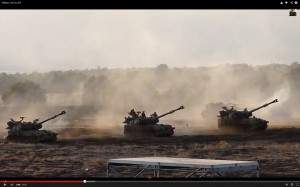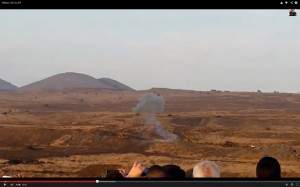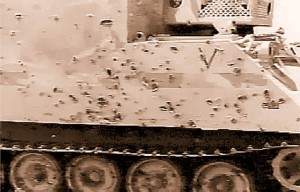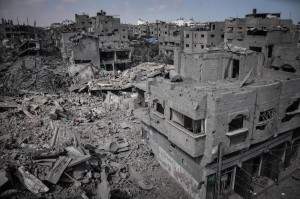Damage done by Israeli weapons
November 6, 2023 by Thomas Wictor
A reader asked me to do something that required all my researching skills. She very reasonably asked me to show the damage done by Israeli weapons.
I read your blog posts regularly, and I noticed that you talk a lot about what Israeli explosions don’t look like. You’ve shown us a lot of Hamas-conducted explosions and explosions from Syria, and you have also posted a lot about what the damage from their weapons look like, as a way to compare it to the IDF’s explosions and damage (sorry if I don’t know all the correct terminology).
I think you’ve written bits and pieces about this in different posts, but do you think you could explain or show what an Israeli explosion DOES look like? You often talk about the types of weapons they use and how the damage we see in pictures is almost always inconsistent with their munitions, and I do believe you mentioned a trademark mushroom cloud once or twice. Do you have any pictures of actual IDF explosions/damage? I’m just curious. I feel like I’m able to look at some pictures now and know for sure that the damage isn’t from Israel, but I don’t really know how to identify when it is.
Thanks for taking the time to read this.
This was a toughie. We’ll begin with an Israeli military demonstration from 2012. Read the jabber I’ve written below the video before or while you watch.
In terms of ground-based armored fighting vehicles and direct- and indirect-fire systems that the Israelis use in combat, most are covered in the video.
At 2:10, an M270 Multiple Launch Rocket System (MLRS) fires a Spike no line of sight (NLOS) missile.
It’s a precision-guided missile that the IDF could put in a terrorist’s back pocket.
However, each missile costs $300,000. It’s far cheaper to use field artillery. Beginning in 2015 each Israeli artillery shell will be precision guided using a system called Top Gun.
At 3:08 in the demonstration video we see three M109 Doher self-propelled howitzers firing the M107 155mm high-explosive (HE) shell.
When the press talks about Israeli artillery being “fired indiscriminately into civilian areas,” they mean this weapon and this shell.
Here’s a picture-perfect example of the mushroom cloud created by the 155mm M107 HE shell.
It’s medium gray, and it dissipates very quickly.
The Raytheon company put out a cheesy video showing the damage that a 155mm HE shell does. In this case it’s the precision-guided M982 Excalibur, but in terms of destructive power, its the same as the Israeli M107.
Some of the shells have a proximity fuse, a tiny radar set in the nose that detects the target coming up and detonates the shell above it. Other shells have impact or contact fuses, meaning the munition blows up when it hits the target.
Watch the ground around the targets. Those are the fragments from the casing. High-explosive artillery shells uses both blast effects—a crushing pressure wave—and fragments to do the damage.
This armored vehicle was hit by fragments from a 155mm HE shell that detonated nearby.
These fragments are irregularly shaped. So what you’re looking for in order to identify an Israeli artillery shell is a relatively wispy, medium-gray mushroom cloud that dissipates quickly, and uneven gouges of no set patterns.
I spent hours looking, and I could find almost no evidence of HE artillery shells in populated areas. During the Battle of Shijaiyah, the IDF fired 600 HE shells into the neighborhood in a last-ditch effort to save their men. You can see fragmentation damage on the buildings.
However, the Palestinians reported sixty-five to seventy deaths out of 100,000. And after the war, Palestinians said that Hamas murdered 100 civilians who tried to flee the neighborhood. It’s clear from the lack of both visible fragmentation damage and heavy casualties that the IDF took extraordinary precautions, which is why after all that hypercritical bloviating, the US is sheepishly trying to learn from the Israelis how to limit civilians deaths.
Another weapon that the IDF uses in urban combat is the tank. It fires a special shell called the APAM-MP-T M329 Kalanit (anti-personnel, anti-material, multipurpose).
It has a hardened steel nose so that it can penetrate a strong point, and then six canisters of shrapnel—round balls—are released. Each canister explodes, sending shrapnel in all directions.
Palestinian cameraman Fadel Shana’a and two to eight others—depending on the source—were killed with an M329 Kalanit shell on April 16, 2008. For some reason the Palestinians lied and said the tank fired a flechette shell, a munition packed with steel darts. However, the photos clearly show shrapnel damage and no sign of steel darts.
To determine whether or not an Israeli M329 Kalanit was used, look for small, round holes. If there’s a large hole in a structure from the penetrating steel nose, there must be evidence of shrapnel inside the building. No sign of shrapnel means it wasn’t a Kalanit.
Finally, we have aerial munitions. The Israeli Air Force uses both high-explosive and inert concrete bombs. Photographic evidence indicates almost no craters or fragmentation damage, which you’d expect if the IAF dropped lots of explosive aerial munitions.
In this video of Shijaiyah, there are fewer than ten craters.
There’s no question that the overwhelming majority of the damage was caused by pressure waves, not high-explosive aerial munitions or artillery shells. To me that means Hamas IEDs. In Shijaiyah they were built into the streets, walls, lamp posts, and lobbies of apartment buildings.
This structure in Khan Younis was destroyed by a 2000-lb (907-kg) GBU-31 joint-direct attack munition (JDAM) with a time fuse set to a delayed explosion.
The bomb went all the way through the building and detonated underground, thus ensuring that lethal steel fragments didn’t damage the homes next door. Most of the debris fell into the crater instead of being thrown great distances. This outcome required almost inconceivable skill on the part of the pilot.
In this image we can see fragmentation damage from a GBU-31 JDAM.
It looks like there’s a crater in the foreground; since most of the buildings appear to have been battered apart, I think the structure in the background was first hit by an inert bomb, and then an explosive munition was dropped, causing the fragmentation damage marked by the green arrow.
For explosive aerial munitions, look for craters and fragmentation.
I’m happy that I can’t give you more evidence of Israeli mass destruction. It simply doesn’t exist. That’s why the press and “human rights” organizations make it up.
This damage is not “typical of an artillery strike.”
Even if the Israelis managed to fire a shell that skimmed the ground and punched through the wall without exploding because it had a time fuse instead of an impact fuse, it still would’ve blown up and caused thousands of holes. That damage was done by a Palestinian rocket-propelled grenade (RPG).
It’s time for the world to put away childish things and admit that Israel doesn’t wage war in the cartoonishly savage way described. Grow up and move on. You’ve lost the argument. Get over it.
This article viewed 4432 times.











